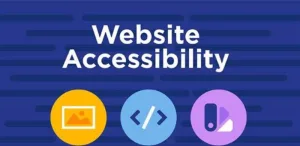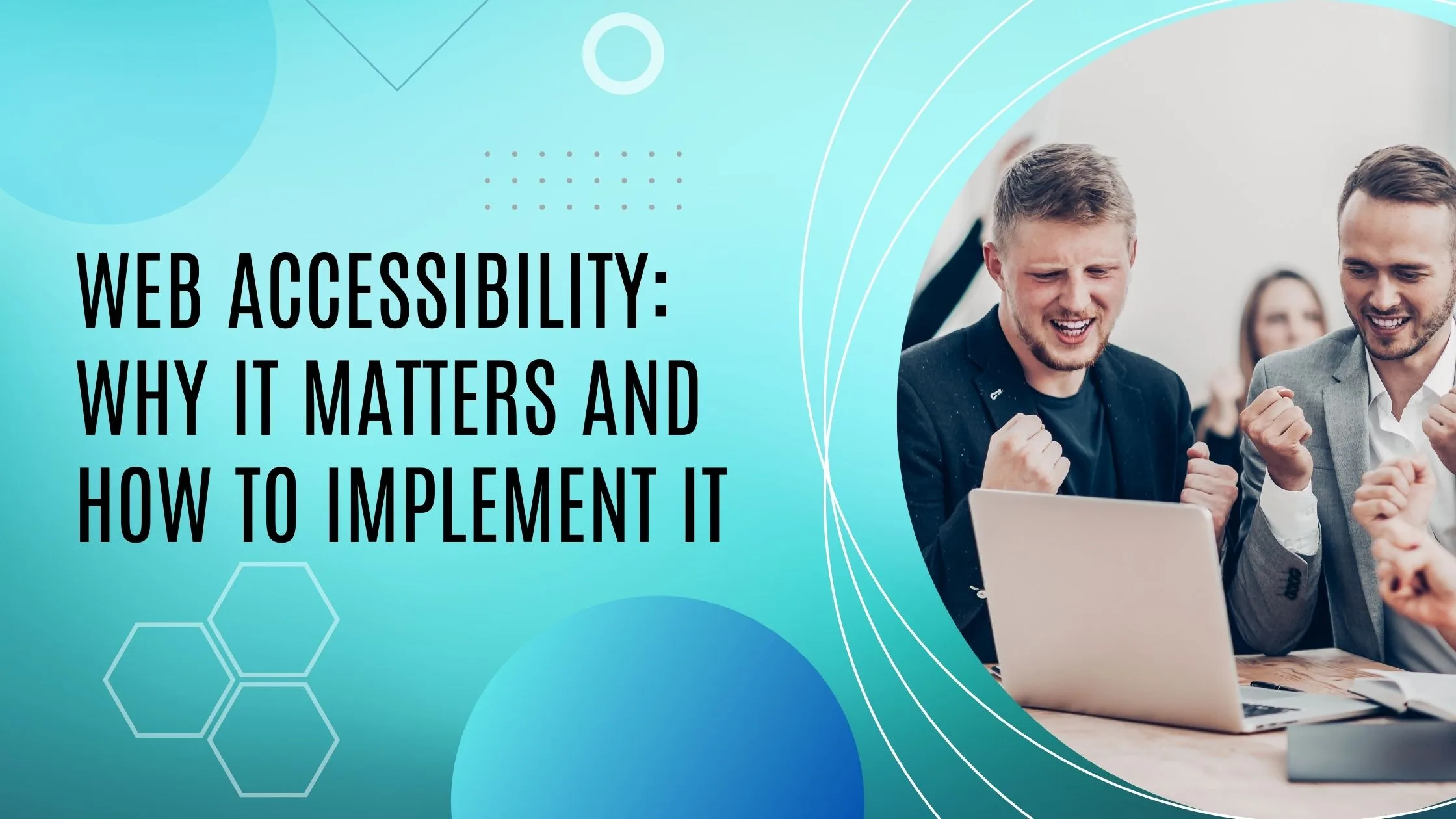Web Accessibility: Why It Matters and How to Implement It
In the digital age, websites have become the primary means of accessing information, services, and resources. They have opened up a world of possibilities, making it easier for people to connect, learn, work, and perform everyday tasks online. However, for some individuals, accessing the internet can be a challenging or frustrating experience.
Web accessibility is the key to addressing this issue, ensuring that websites are inclusive and usable for everyone, regardless of their abilities or disabilities. In this comprehensive guide, we will explore the importance of web accessibility and provide practical steps on how to implement it.
1.The Significance of Web Accessibility
Web accessibility refers to the practice of designing and developing websites and web applications that can be used by people with disabilities. Disabilities can be permanent, temporary, or situational and include conditions like visual, auditory, motor, or cognitive impairments. Making websites accessible means removing barriers and providing alternatives that enable people with disabilities to perceive, understand, and interact with web content effectively.
-Inclusivity for All:
The primary reason why web accessibility matters is inclusivity. The internet should be a place where everyone has the opportunity to participate equally, regardless of their physical or cognitive abilities. This inclusivity extends to individuals with various disabilities, including but not limited to:
- Visual impairments: Blindness, low vision, color blindness.
- Auditory impairments: Deafness, hard of hearing.
- Motor impairments: Limited dexterity, tremors.
- Cognitive impairments: Dyslexia, attention disorders, memory issues.
-Legal and Ethical Obligations:
Many countries have recognized the importance of web accessibility and have enacted laws to ensure compliance. In the United States, for instance, the Americans with Disabilities Act (ADA) and Section 508 of the Rehabilitation Act require federal agencies and contractors to make their digital content accessible. Non-compliance can result in legal consequences. Beyond legal obligations, ethical considerations are equally vital. Building accessible websites is a step toward creating a more inclusive and equitable digital environment.
-Wider Reach and Audience:
Prioritizing web accessibility can expand your website’s reach and audience. An accessible website not only caters to people with disabilities but also benefits older individuals, those with temporary impairments (e.g., a broken arm), and even those in noisy environments. The broader your audience, the greater your impact, whether you’re a business, government entity, educational institution, or individual content creator.
-SEO and Improved Search Rankings:
Search engines like Google consider web accessibility when ranking websites. By optimizing your site for accessibility, you improve its SEO performance, making it more discoverable and easier to find. Search engines reward websites that offer a seamless user experience for all visitors.

2. Implementing Web Accessibility
Steps to Ensure an Accessible Website
Implementing web accessibility involves a combination of design, development, and content considerations. The goal is to make your website perceivable, operable, understandable, and robust for all users. Here are the key steps to achieving web accessibility:
-Use Semantic HTML:
- Semantic HTML elements: Use appropriate HTML tags (e.g., headings, lists, tables) to structure your content. This helps screen readers and assistive technologies understand the content’s hierarchy and context.
-Provide Alternative Text for Images:
- Alt attributes: Always include descriptive alt attributes for images. These descriptions help users with visual impairments understand the content and context of the images.
– Ensure Keyboard Accessibility:
- Keyboard navigation: Make sure all interactive elements, links, and forms are accessible and operable via a keyboard. Avoid reliance on mouse-specific actions.
– Use ARIA Roles and Attributes:
- ARIA (Accessible Rich Internet Applications) attributes: Employ ARIA roles and attributes to enhance the accessibility of dynamic web content, such as single-page applications and web applications.
-Captions and Transcripts for Multimedia:
- Multimedia content: Provide captions for videos and audio content. Additionally, offer text transcripts for audio content, which aids both users with disabilities and those in noise-sensitive environments.
-Ensure Proper Heading Structure:
- Headings hierarchy: Use a clear and consistent heading structure throughout your web pages. Heading tags (H1, H2, H3, etc.) provide a logical order for screen reader users to navigate.
– Color and Contrast:
- Color choices: Ensure sufficient color contrast between text and background to improve readability for users with low vision or color blindness.
– Form Accessibility:
- Label forms: Label all form fields with clear and concise labels. Provide error messages that are clear and informative.
– Focus Management:
- Focus indicators: Clearly define focus states for interactive elements to make them easily identifiable when using a keyboard or assistive technology.
-Test with Assistive Technologies:
- Screen readers and other assistive devices: Regularly test your website with screen readers, speech recognition software, and other assistive technologies to identify and address accessibility issues.
-Regular Accessibility Audits:
- Ongoing evaluation: Conduct regular accessibility audits to identify and rectify issues as your website evolves. Automated tools, user testing, and expert audits can be valuable resources.
3: Web Accessibility Beyond Compliance
Striving for Inclusive Excellence
While achieving compliance with accessibility standards is essential, web accessibility should not be viewed as a mere checkbox item. Strive for inclusive excellence by going beyond the minimum requirements. Here are some additional considerations:
User-Centered Design:
- User personas: Understand the needs, preferences, and challenges of different user groups, including those with disabilities.
User Testing:
- User feedback: Regularly gather feedback from users with disabilities to improve your website’s accessibility.
Education and Awareness:
- Training: Educate your team about web accessibility best practices and foster a culture of accessibility awareness within your organization.
Third-Party Content:
- External content: Encourage third-party content providers to create accessible content when sharing materials on your website.
Continuous Improvement:
- Evolution: Recognize that web accessibility is an ongoing journey. Stay informed about new technologies and best practices to continuously improve your website’s accessibility.
4: Resources for Web Accessibility
Tools and References
For those looking to delve deeper into web accessibility, the following resources can be valuable:
Web Content Accessibility Guidelines (WCAG):
- WCAG: The WCAG guidelines are the globally accepted standards for web accessibility. They provide detailed recommendations and techniques for creating accessible web content.
Accessibility Evaluation Tools:
- Automated tools: Various automated tools can help identify accessibility issues on your website. Some popular options include WAVE, axe, and the Accessibility Insights suite.
Assistive Technologies:
- Screen readers: Familiarize yourself with popular screen readers like JAWS, NVDA, and Voice Over to understand how users with visual impairments access websites.
Online Courses and Training:
- Online courses: Platforms like Coursera, edX, and Udacity offer courses on web accessibility, including those from experts in the field.
Accessibility Communities and Forums:
- Online communities: Join online forums, mailing lists, or social media groups dedicated to web accessibility to stay up-to-date with the latest developments and best practices.
Conclusion
Web accessibility is not merely a legal requirement; it is a moral and practical imperative. Creating an inclusive digital space benefits everyone, making the internet a more accessible and enjoyable place for all users.
By understanding the significance of web accessibility and taking the necessary steps to implement it, you contribute to a more inclusive online world, ensuring that no one is left behind in the digital age. As web accessibility continues to evolve, staying committed to inclusive design is a commitment to a better, more equitable future for all internet users.




